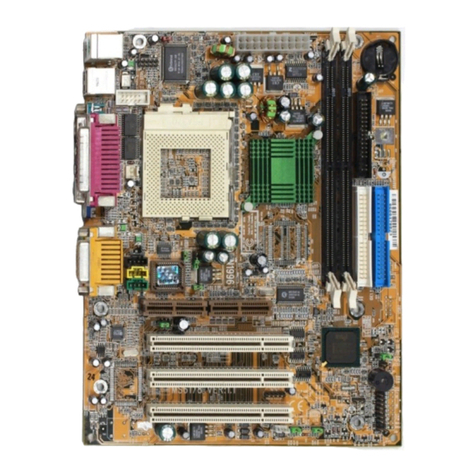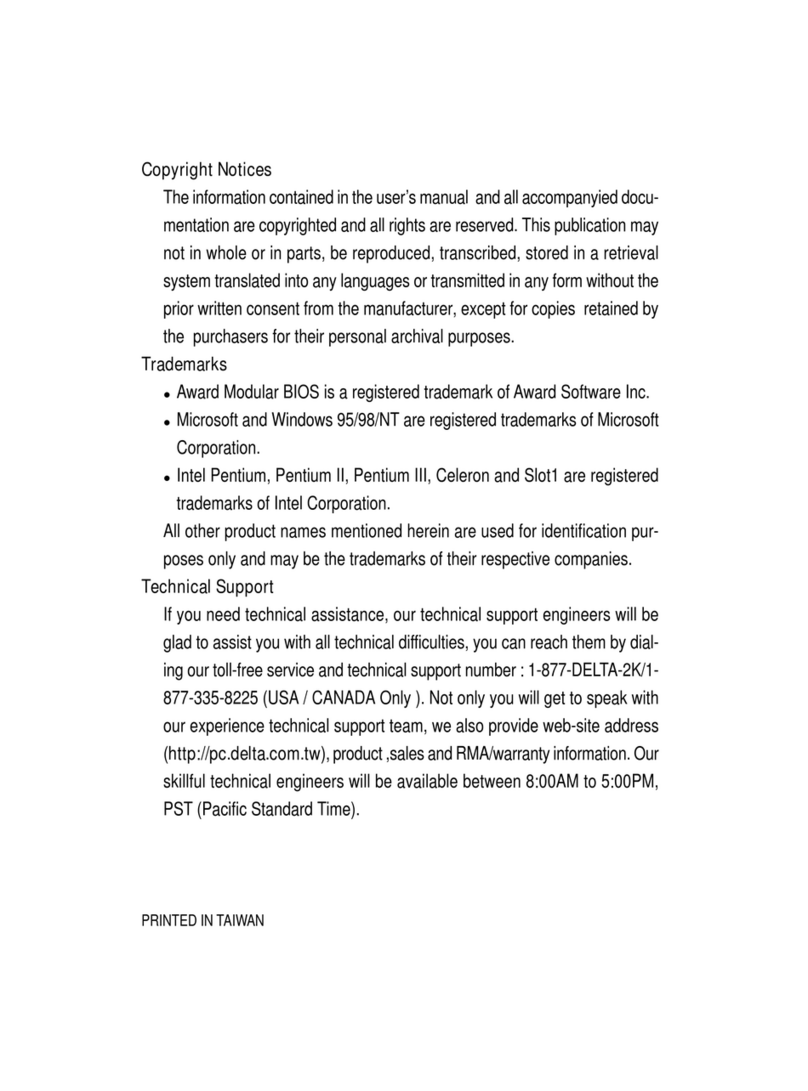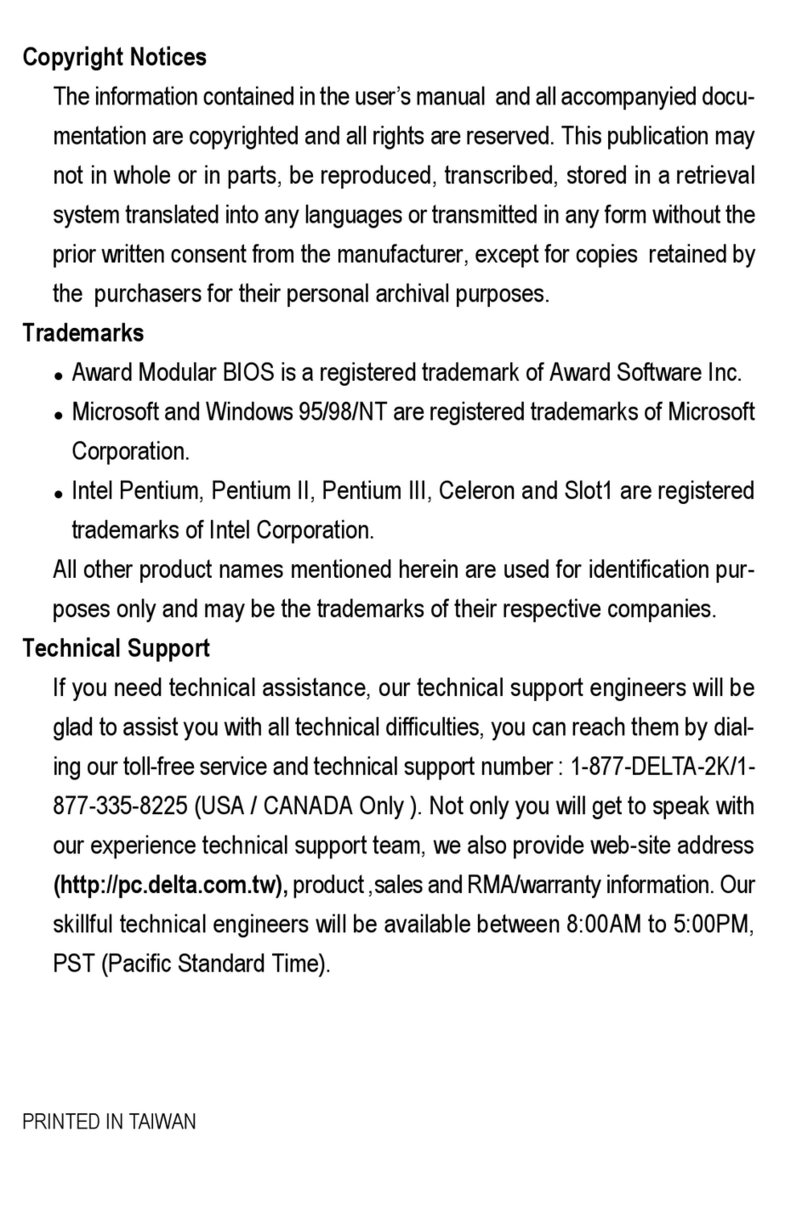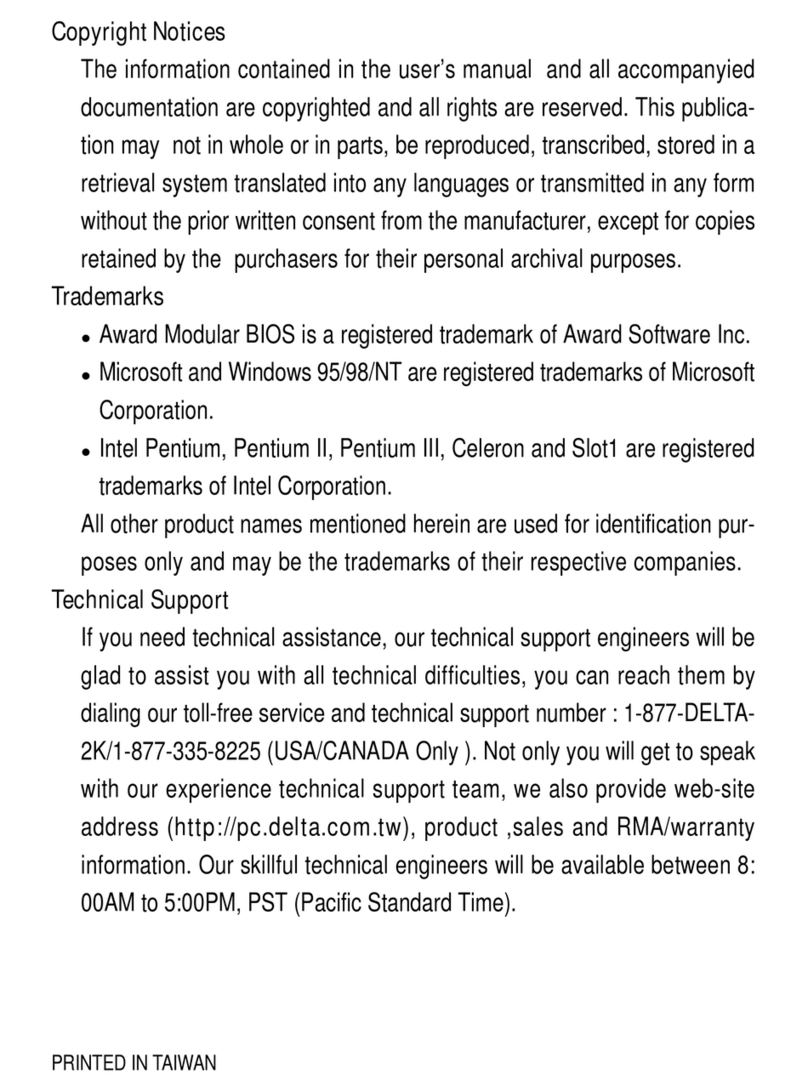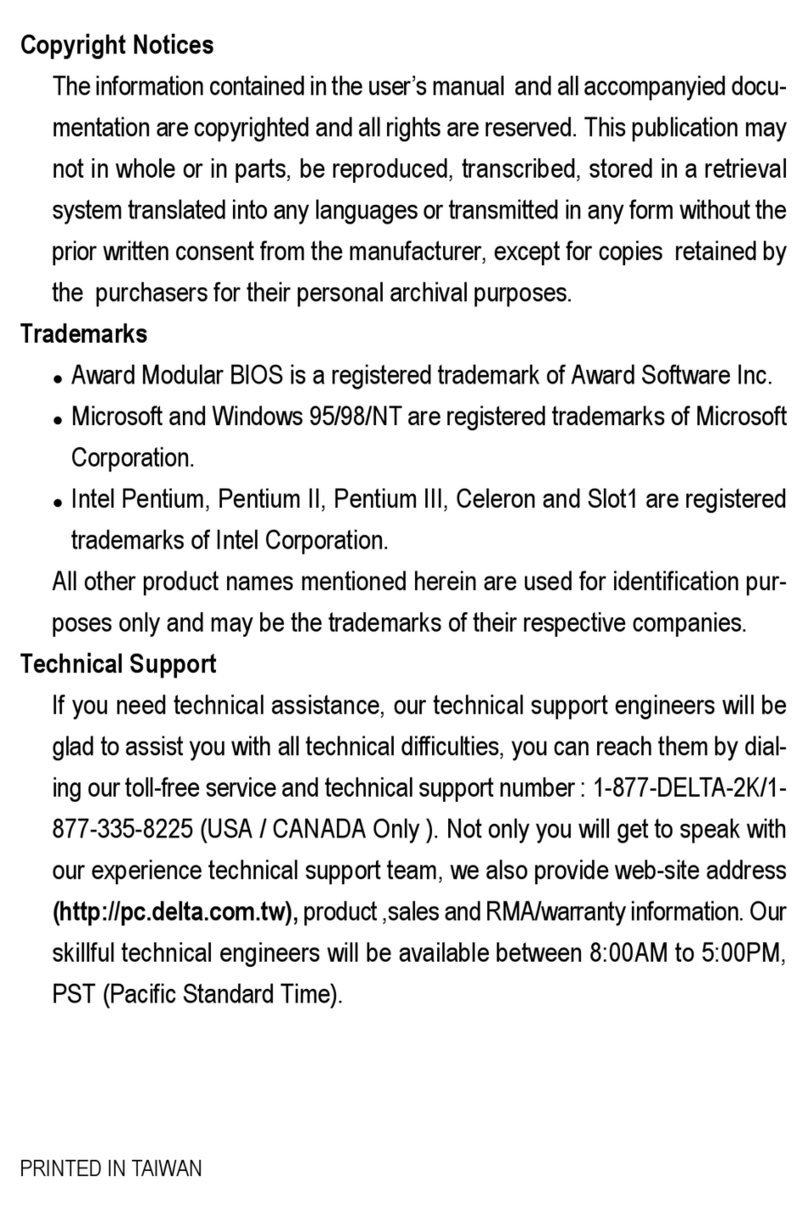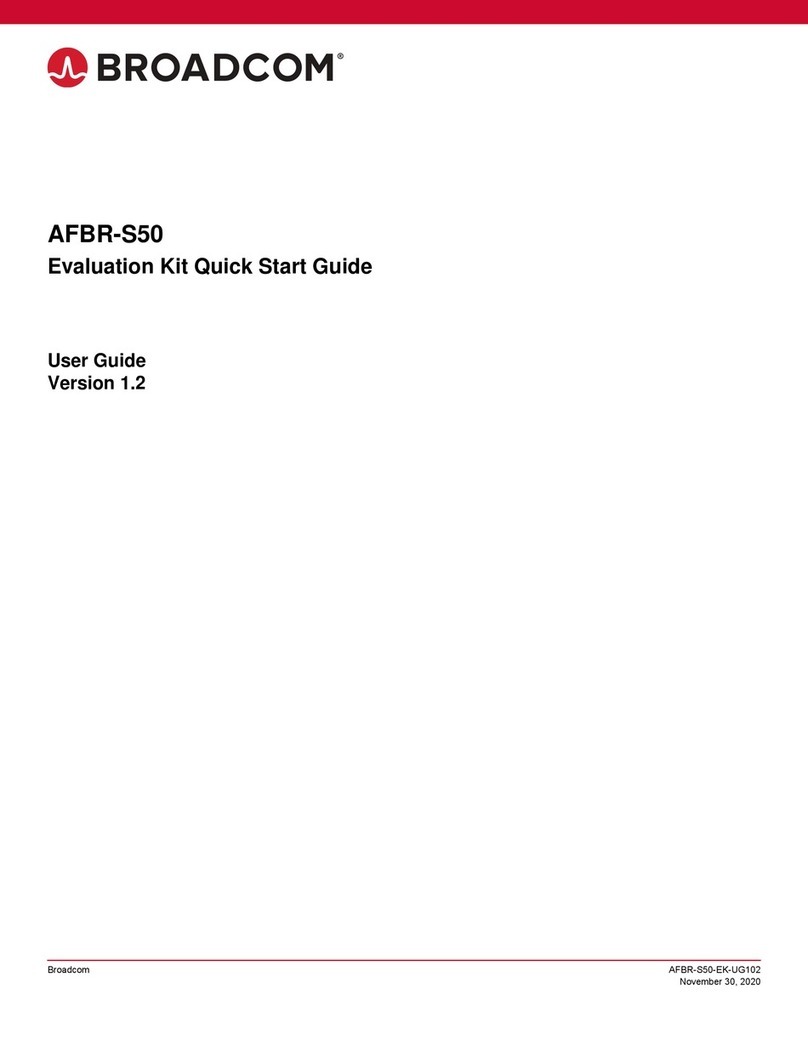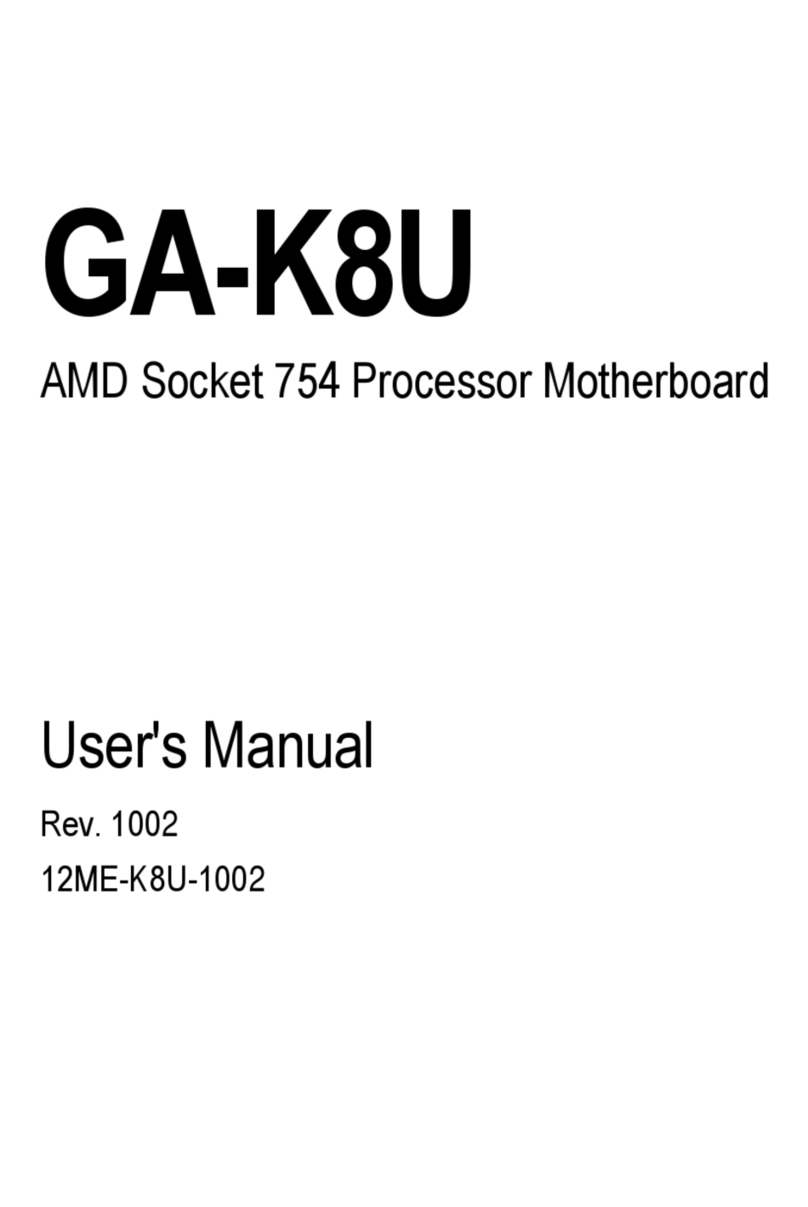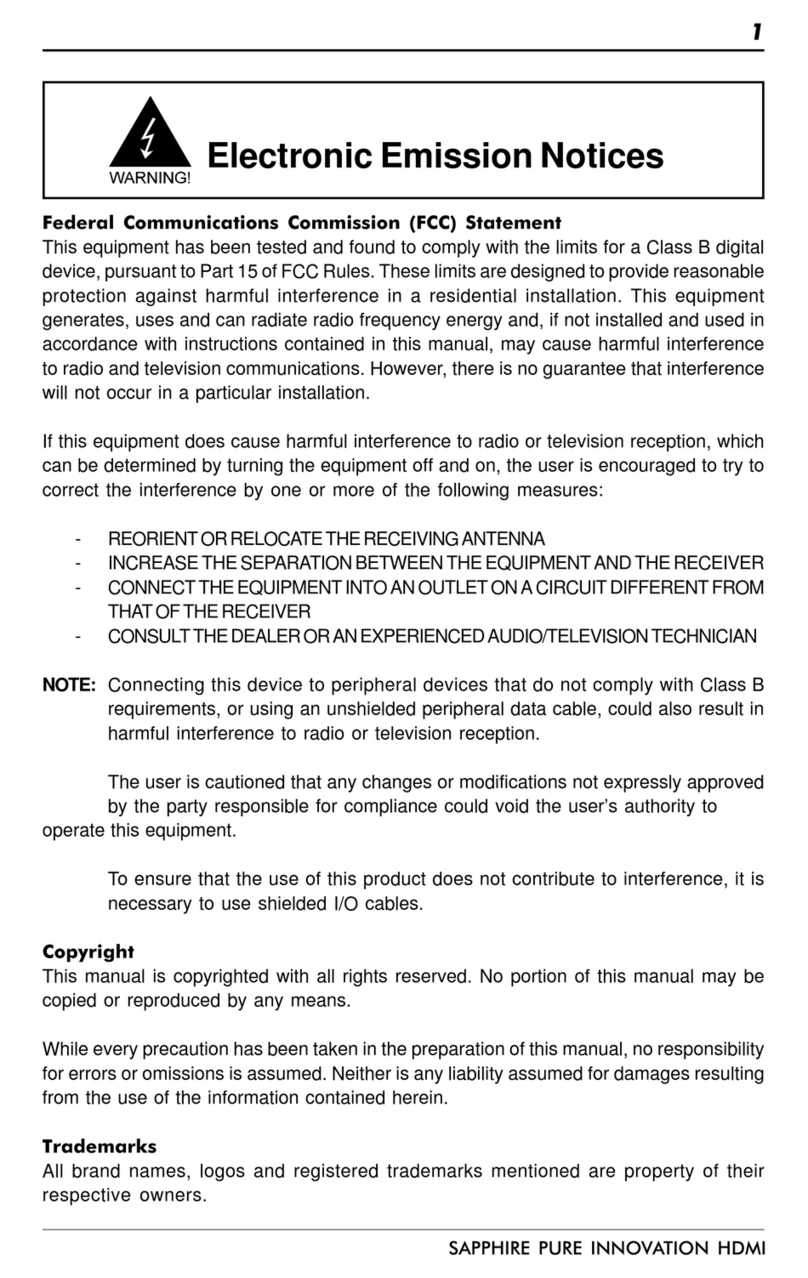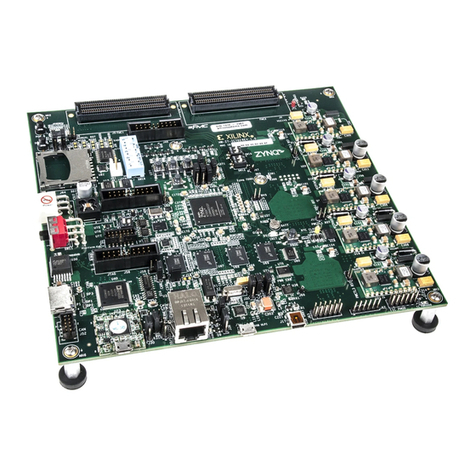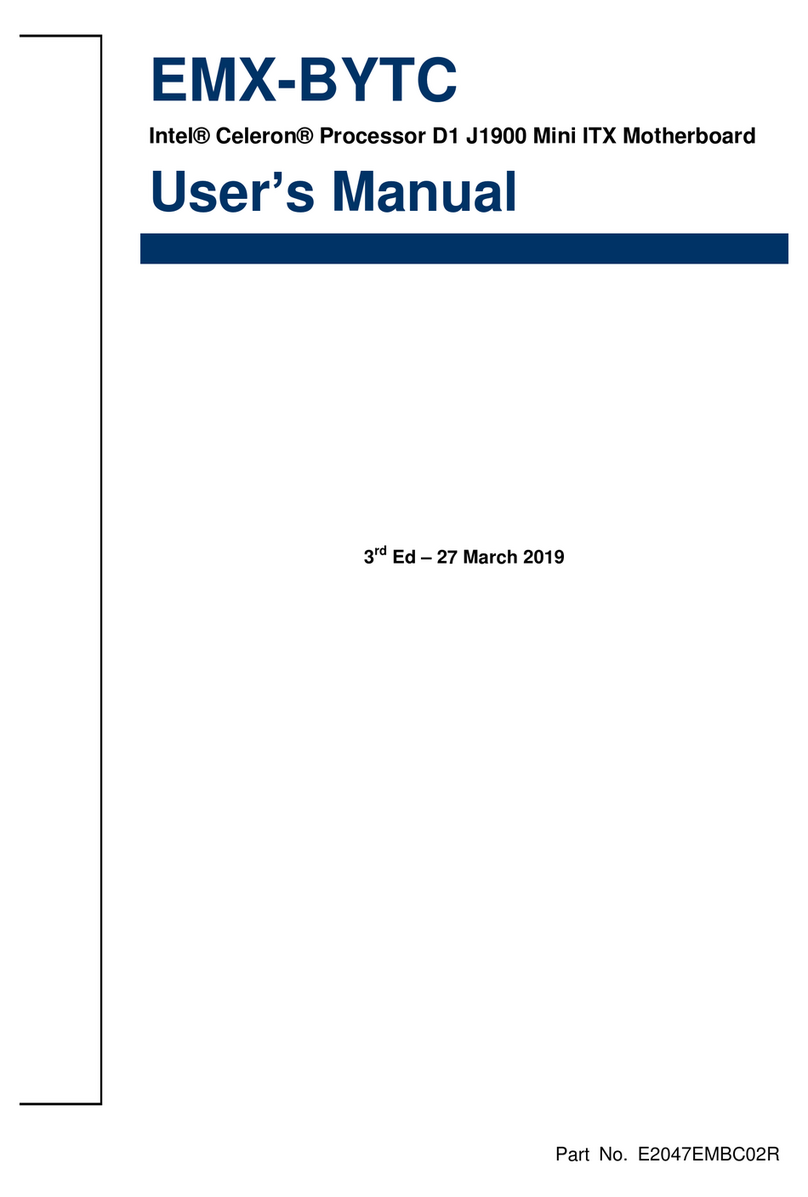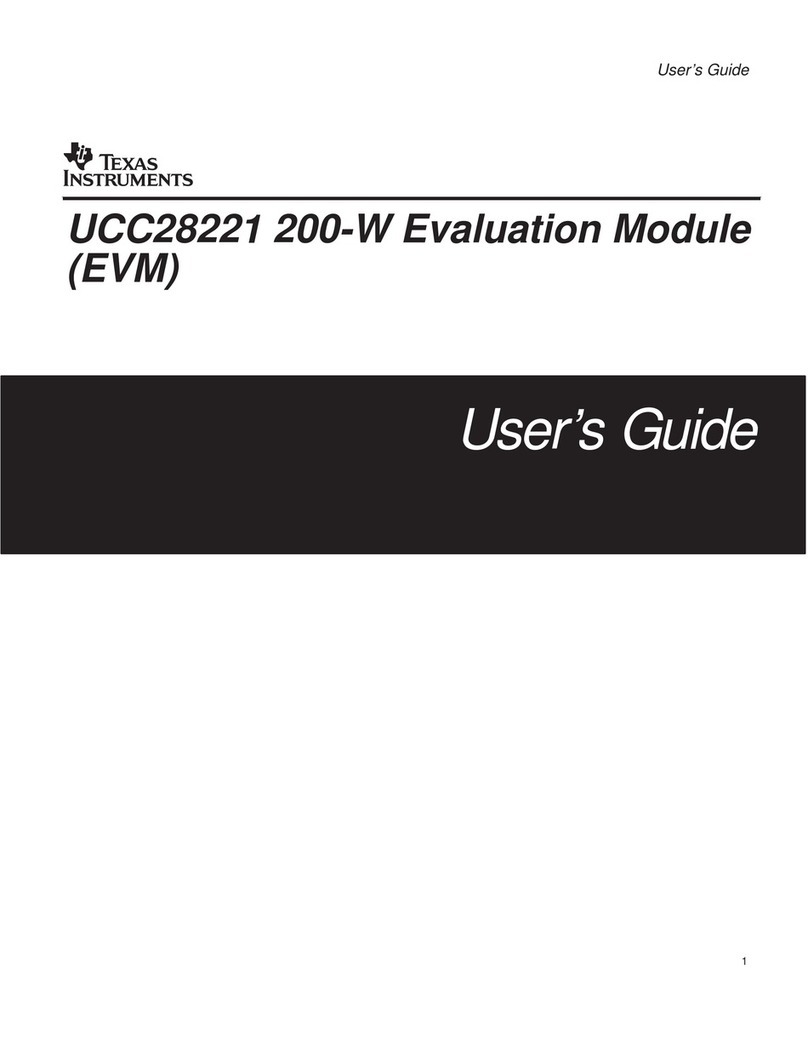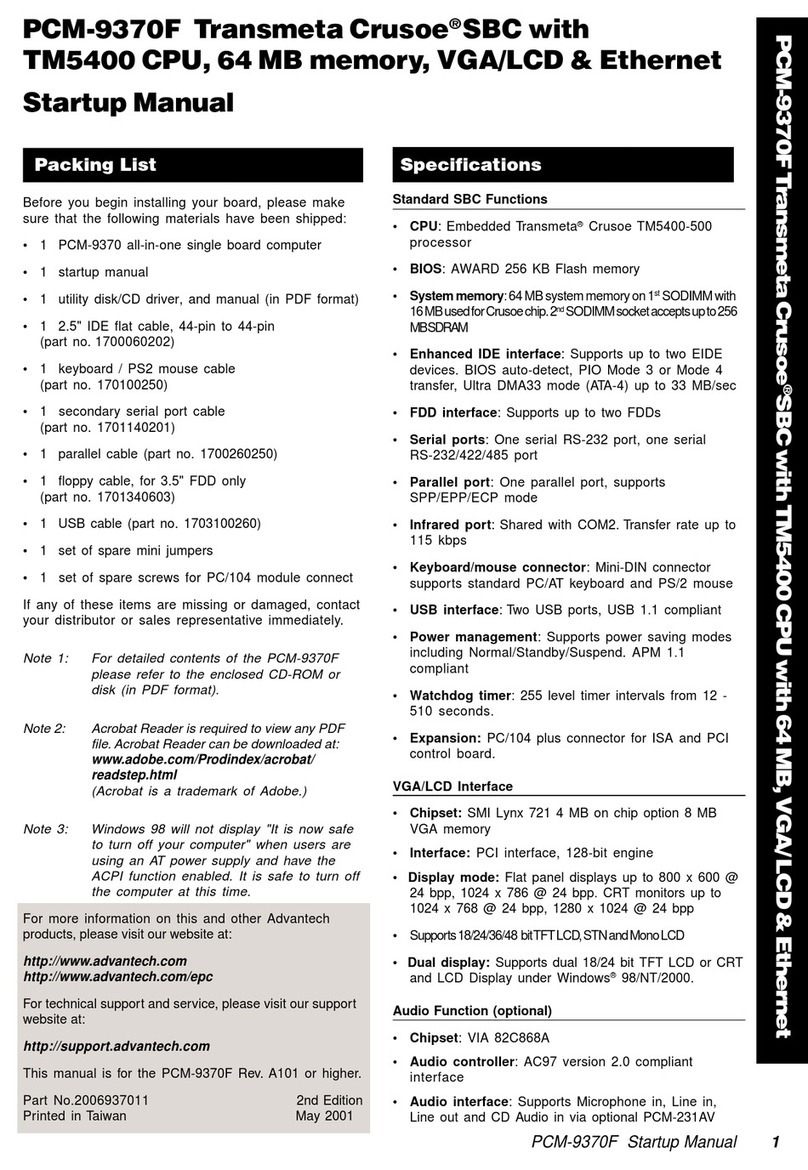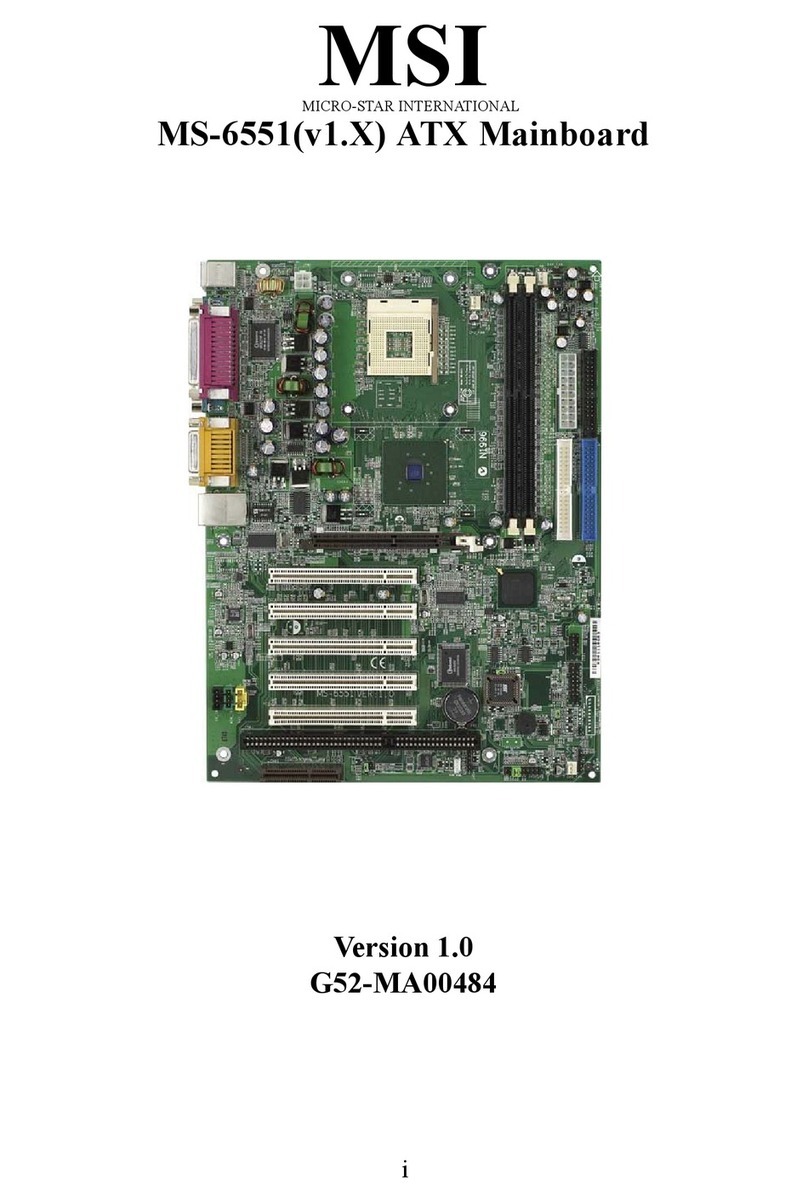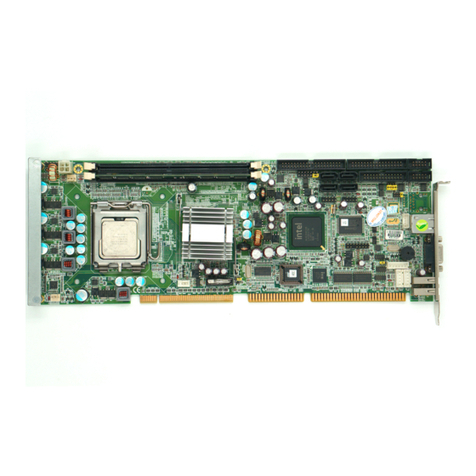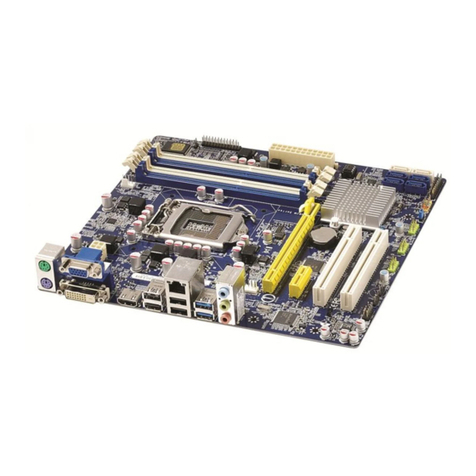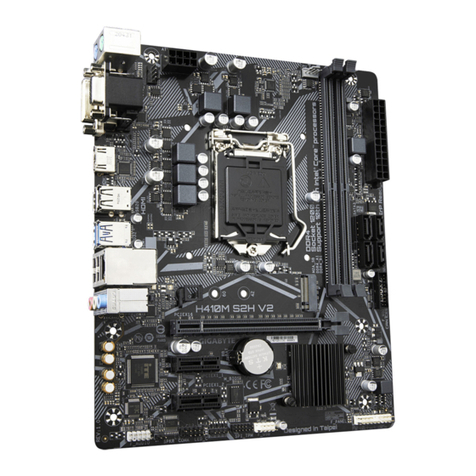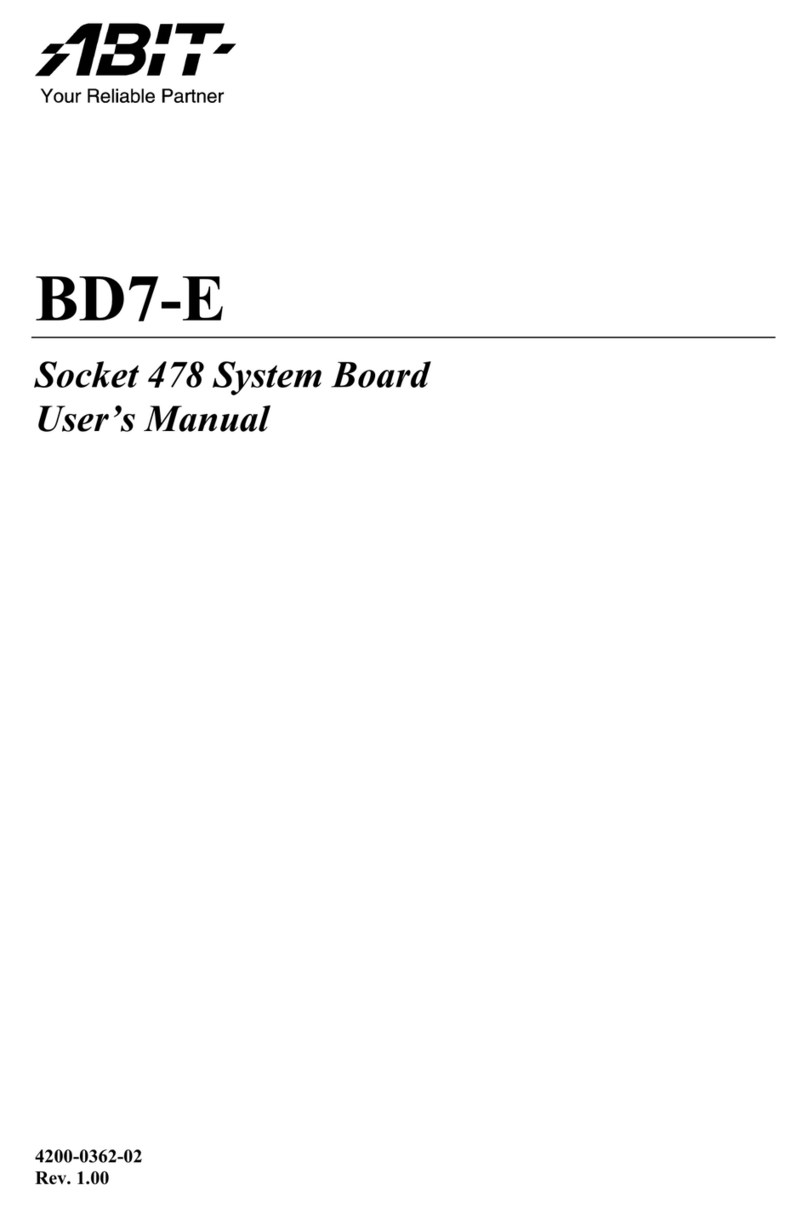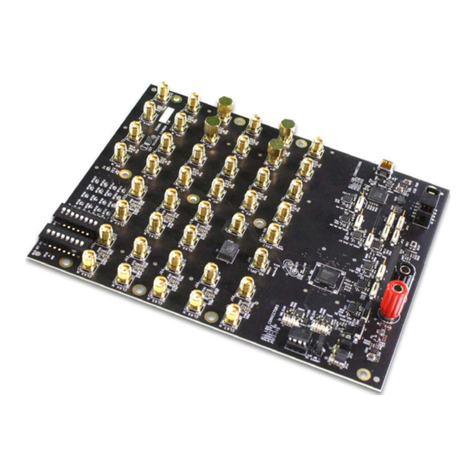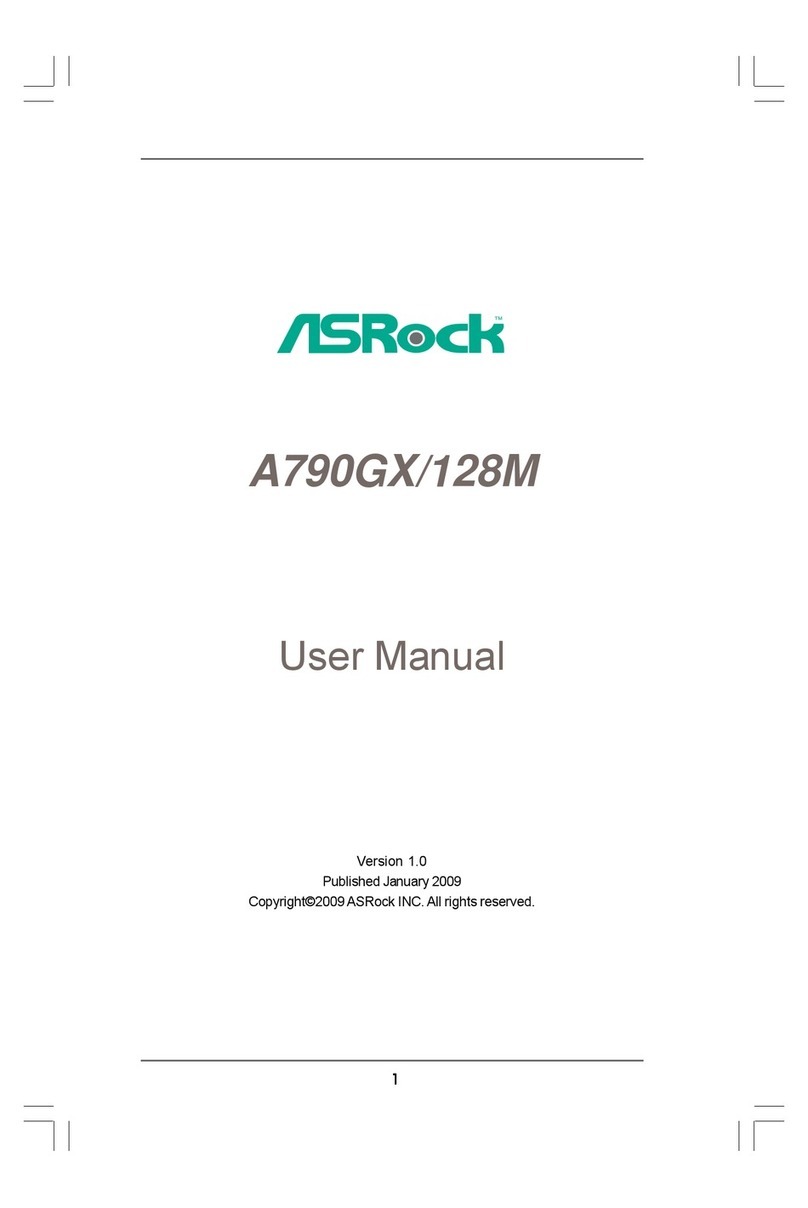Delta M81-X Series User manual

Copyright Notices
The information contained in the user’s manual and all accompanyied documen-
tation are copyrighted and all rights are reserved. This publication may not in
whole or in parts, be reproduced, transcribed, stored in a retrieval system trans-
lated into any languages or transmitted in any form without the prior written con-
sent from the manufacturer, except for copies retained by the purchasers for
their personal archival purposes.
Trademarks
Award Modular BIOS is a registered trademark ofAward Software Inc.
Microsoft and Windows 95/98/NT are registered trademarks of Microsoft
Corporation.
Intel Pentium, Pentium II, Pentium III, Celeron and Slot1 are registered trade-
marks of Intel Corporation.
All other product names mentioned herein are used for identification purposes
only and may be the trademarks of their respective companies.
Technical Support
If you need technical assistance, our technical support engineers will be glad to
assist you with all technical difficulties, you can reach them by dialing our toll-free
service and technical support number : 1-877-DELTA-2K/1-877-335-8225 (USA/
CANADA Only ). Not only you will get to speak with our experience technical
support team, we also provide web-site address (http://pc.delta.com.tw), prod-
uct ,sales and RMA/warranty information. Our skillful technical engineers will be
available between 8:00AM to 5:00PM, PST (Pacific StandardTime).
PRINTED IN TAIWAN

CONTENTS
1. Checklist.............................................................2
2. Introduction.......................................................3
3. Specification......................................................4
4. Layout Guide......................................................6
5. Function Illustrations........................................8
6.HardwareInstallation........................................21
7.BIOSConfiguration...........................................27
8.SoftwareInstallation..........................................54
P/N : 5011501001 SEP/1999 REV1.1

M81-X Series User’s Manual
2
1. Checklist
Check that your package is complete. If any listed items are missing, please
contact your retailer immediately. The M81-X series motherboard package
contains the following.
Package box
M81-X Series Motherboard
Anti-static bag
EPE sheet
Serial cable with bracket
User’s Manual
IDE 40-Pin ribbon cable
IDE 40-Pin ribbon cable for Ultra DMA33 HDD
(Note : This item for M81L-X motherboard only.)
IDE 40-Pin ribbon cable for Ultra DMA33/66 HDD
(Note : The 80-Pin ribbon cable is designed with a 40-Pin connector
and this item for M81-X, M81DC-X motherboard.)
Floppy 34-Pin ribbon cable
Driver and Utilities CD
11
11
1
22
22
2
33
33
3
44
44
4
55
55
5
66
66
6
77
77
7
66
66
6
33
33
3
44
44
4
88
88
877
77
7
99
99
9
55
55
5
99
99
9
88
88
8
22
22
2
11
11
1

M81-X Series User’s Manual 3
2. Introduction 2. Introduction
The key feature of the M81-X series motherboard is the dual Processor socket which allow
you to install any of the Slot1 Processor (including Pentium II/III and SEPP Celeron) and
PPGA370 Processor.
ThePentiumII/III Processorwhichinclude32Kofinternal level-1 cachememoryand 512K of
external level-2 cache memory.
PentiumII Processorcanruna66MHzsystembusandoperateatclockspeedfrom233MHz
up to 333MHz.
Pentium II/III Processor also can run a 100MHz system bus and operate at clock speed
from 350MHz up to 600MHz.
The SEPP Celeron Processor which include 32K of level-1 cache memory and 128K of level-
2 cache memory. It can run a 66/100MHz system bus and operate at clock speeds up to
500MHz.(Note : Celeron 266/300 Processor do nothave feature of level-2 cache memoryon
die).
The PPGA370 Celeron Processor is square plastic package and install in a Zero Insertion
Force (ZIF) socket called a PGA370 Socket.
The new Celeron Processor are close to Pentium II performance because they include a
level-2 cache memory of 128K. However, they operate at a 66/100MHz system bus and
operate at clock speeds up to 500MHz.
You can configure the motherboard for any of supported Processor System Bus Frequency
using the BIOS setup utility. It is not necessary to set switches or jumpers. Also it can Auto-
Detect Processor clock speeds of the Slot1 SEEP Celeron and PPGA370 Celeron Processor.
This motherboard allows complete flexibility. You can choose the high performance Slot1
Pentium II/III Processor or the inexpensive PPGA370 Celeron Processor according to the
system requirements and price/performance comparison of the two kinds of Processor. For
performance and upgrade required, we recommend you must install PC-100 compliant DIMM
modules that operates at 100MHz.
M81-Xseriesmotherboardprovidesfour32-bitPCIslotsand anAMRslot, alsohastwosupport
Ultra DMA33/66 PCI IDE channel and floppy disk drive peripherals interface.
Inadditiontosuperiorhardwarecapabilities,featureslikePlugandPlay,Soft-off,ACPIfunction,
Keyboard Power-On, Wakeup by Ring/LAN, fan off in sleeping state and BIOS upgraded are
provided on M81-X series platform.

M81-X Series User’s Manual
4
3. Specification
Chipset
M81L-X Consists of the Intel’s FW82810 + FW82801AB
M81-X Consists of the Intel’s FW82810 + FW82801AA
M81DC-X Consists of the Intel’s FW82810DC100 + FW82801AA
Winbond’s W83627HF LPC Super I/O
AC97 Codec
CPU Support
Intel’s Solt1 Pentium II/III Processors
Intel’s Solt1 SEPP Celeron Processors
Intel’s PPGA370 Celeron Processors
System Bus Frequency
66/100MHz System Bus Frequency Supported
System Bus Frequency and CPU core voltage auto-detected
Memory
Memory Capacity from 8MB up to 256MB
Onboard Display Cache 4MB SDRAM interface (M81DC-X only)
Two DIMM Sockets support PC-100 compliant SDRAMs
Expansion Slots
Four 32-bit v2.2 PCI Slots support up to 133MB/sec maximum throughput
OneAMR slot supports a very affordableAudio Modem Riser card
On Board I/O
DualintegratedIDEcontrollersupportsUltra DMA33/66Modeand PIOMode4
(M81L-X motherboard supports Ultra DMA33 Mode and PIO Mode 4 only.)
Dual high speed UARTcompatible Serial Ports

M81-X Series User’s Manual 5
Single STD/ECP/EPP Parallel Port
Floppy Disk Drive Interface
Integrated Consumer IR and Standard IR supports (This item is optional)
Dual Universal Serial Bus Ports
Dual PS/2 mini DIN supports Keyboard and Mouse
Integrated 3D/2D AGP Graphics Controller
Single Game_Audio/Line-in/Line-out/MIC Ports
Hardware Monitor Functions
OnNow Functions
Power Management Functions
Built-in PCI 3D audio compliant with PC99, Intel AC97 and AMR v1.01
Power
Harris HIP6021 PWM Power Controller
ATX Power Supply Configuration
BIOS
Award Medallion v6.0 BIOS
Compliancies
DOC Compliant
CE Certification
Form Factor
ATX (305 x 200 x 1.6mm)
4 Layer PCB Design
3. Specification

M81-X Series User’s Manual
6
4. Layout Guide
Use the following illustration and key to identify the components on your
motherboard.
PGA370 Socket for Intel’s PPGA370 Processors
Slot1 Slot for Intel Pentium II/III and SEPP Celeron Processors
Back Panel I/O Ports
COM2 Serial Header
Wake On LAN Connector
IrDA compliant IR infrared Header (This item is optional)
Four PCI Slots
AMR (Audio Modem Riser) Slot
22
22
2
33
33
3
44
44
4
55
55
5
66
66
6
77
77
7
88
88
8
99
99
9
1111
1111
11 1212
1212
12
1414
1414
14
1515
1515
15
1717
1717
17
1818
1818
18
•19•19
•19•19
•19
2020
2020
20
2121
2121
21
11
11
1
2222
2222
22
2323
2323
23
2424
2424
24
1010
1010
10 1313
1313
13
1616
1616
16
11
11
1
22
22
2
33
33
3
44
44
4
55
55
5
77
77
7
88
88
8
66
66
6

M81-X Series User’s Manual 7
CD-In Header
CMOS Memory Clear Header
Lithium CR2032 Battery
Chassis Fan Connector
Buzzer
Power LED
Front Panel I/O Header
Flash BIOS Lock Header (This item is optional)
FDD Device Header
Two IDE (Primary and Secondary) Devices Header
Two DIMM Sockets
CPU Fan Connector
ATX Power Connector
Processor Type Setting Header
Power Fan Connector
Keyboard and Mouse Power On Header
4. Layout Guide
1111
1111
11
1212
1212
12
1313
1313
13
1414
1414
14
1515
1515
15
1616
1616
16
1717
1717
17
1818
1818
18
1919
1919
19
2020
2020
20
2121
2121
21
2222
2222
22
2323
2323
23
2424
2424
24
99
99
9
1010
1010
10

M81-X Series User’s Manual
8
Refer to this section for details on the hardware configuration. All jumper settings should be
configured prior to install the motherboard.
5.1. Processor Slot “Slot1”
Slot1 slot is a 242-Pin edge slot that can install the Slot1 Pentium II/III and SEPP
Celeron Processors.
5.2. Processor socket “PGA370”
PGA370socketisa370-PinZIFsocketthatcaninstallthePPGA370CeleronProcessors.
5. Function Illustrations

5. Function Illustrations
M81-X Series User’s Manual 9
5.3. DIMM socket “DIMM1/2”
DIMM socket is a 168-Pin unbuffered type socket that can install a 3.3V unbuffered
SDRAM DIMM module.
TheM81-XseriesmotherboardhastwoDIMMsocketand maximummemory capacity
is 256MB.
For best performance, we recommend to use PC-100 DIMM module on the
motherboard. If you install more than one module, the module should have different
capacities, but the memory chips should be the same type and brand.
5.4. PCI slot “PCI1,2,3,4”
It is a 120-Pin 32-bit expansion slot that accommodate all PCI peripherals and meet
the PCI v2.2 specifications.
The M81-X series motherboard has four PCI slots for your expansion cards.
Note : Follow the steps mentioned below to install the PCI interface card.
Turn off your system power & remove the system case.
Choose an unused PCI slot and remove the slot cover.
Insert the interface card with the bottom edge to the slot. (Never insert the card at an
angle). Check if your card is properly installed and refer to PCI card documentation
regrding any additional requirement.
Place the screw to fit the card.
Before place your system case back, please check if you need to install any other
card.
Then place you system case back and make sure it is properly fixed by screw.

M81-X Series User’s Manual
10
5.5. Audio Modem Riser Slot “AMR”
It is a 46-Pin expansion slot that accommodate a specially designed Audio Modem
Riser card called an AMR.
Main processing is done through software and controller by motherboard’s I/O
Controller Hub. This provides an upgrade able audio/modem solution at an incredibly
low cost.
Note : Follow the steps mentioned below to install a AMR card.
Please set jumper cap to the secondary position on the AMR interface card.
Insert the AMR interface card with the bottom edge to the slot (Never insert the card
at an angle). Check if your card is properly installed.
Place the screw to fit the card.
Refer to theAMR card’s documentation regarding any additional requirement.

5. Function Illustrations
M81-X Series User’s Manual 11
5.6. FDD Device Header “FDC”
It is a 34-Pin box header that support up to two floppy disk drive devices of various
sizes and densities.
Floppy disk drive’s priority is determined by the location of the drive on the cable.
When install only one floppy disk drive you must connect it to the master position on
the ribbon cable.
5.7. IDE Devices Header “IDE1,2”
It is a 40-Pin box header that support standardATAPI IDE devices.
ThisisandualchannelIDE controller, a primary and a secondary. Each channel may
support up to twoATAPI IDE devices.
The primary channel has priority to the secondary channel. Within each channel, the
two different devices are distinguished by master and slave relationship.The master
device has priority over the slave device.
When install more than one device in a channel you must set one a master and the
other as its slave device. These device setting are usually determined by a jumper
cap that is on theATAPI IDE device.
The M81-X and M81DC-X motherboard may supports both the Ultra DMA33 and
Ultra DMA66 protocols. The M81L-X motherboard may only support Ultra DMA33
protocols.
Note : In order to achieve higher data transfer rate, please used a 40-Pin Ultra DMA66
IDEribboncable.PleaseberememberthatonlyM81DC-X&M81-XMotherboardsupport
Ultra DMA66 solution.

M81-X Series User’s Manual
12
++
++
+++
++
+
5.8. Front Panel I/O Header “FSP1”
The M81-X series motherboard connectors to the front panel I/O are located on jumper
block FSP1. The illustrations is below.
Power Switch - It is a 2-Pin header connects to the chassis-mounted power button.
Reset-Itis a 2-Pin header connects to the chassis-mounted reset switch and is used
to reboot the system.
HDDLED-Itisa 2-Pinheaderconnectstothechassis-mountedHDDLEDtoindicate
HDD activity.
Key Lock - It is a 2-Pin header connects to the chassis-mounted key lock switch. The
key lock switch is used to lock the keyboard for security purpose.
PowerLED - It is a 3-Pin header connectstothechassis-mountedpower LED. Power
LED is on, when the motherboard is supplied power.
2 12 1
2 12 1
2 1
26 2526 25
26 2526 25
26 25
Power
Switch
Reset Switch
Power
LED
K/B
Lock Reserve for
Speaker
2 12 1
2 12 1
2 1
26 2526 25
26 2526 25
26 25
HDD
LED
++
++
+

5. Function Illustrations
M81-X Series User’s Manual 13
5.9. Serial Port Header “COM2”
It is a 10-Pin box header that used for serial devices such as a mouse, fax/modem
and so on.
This serial port is identified by the system as COM2/4.
5.10. Battery “BAT1”
Itis a coin-cell style Lithium CR2032 battery isusedtoprovidepower to the RTC and
CMOS memory.
The battery has a three years life if the system is not powered up. When the system
powers up, the power for the RTC and CMOS RAM is supplied from the 3.3V power
supply to extend the life of battery.
Replace if BIOS does not keep its settings.

M81-X Series User’s Manual
14
5.11. Buzzer “BZ1”
It is a 5 volts onboard buzzer. When system has any abnormally state that you will
hear warnings through buzzer.
5.12. CUP / Power / Chassis Fan Connector “J1,J2,J11”
Theseare 3-Pin connector that support cooling fan of 12VDC/0.5Aorless,when the
systemgoes into sleep state, fan should be shut down to eliminateaudiblenoiseand
reduce power consumption. You can monitor the fan speed by way of W83627HF
chip and the fan must come with a tachometer output.
The CPU and motherboard will overheat if there is no air flow across the CPU and
onboard heat sink. Damage may occur to the motherboard and the CPU fan if these
pins are incorrectly used.
Pin Assignment
1 GND
2 +12V
3Speed/RPM
1
3

5. Function Illustrations
M81-X Series User’s Manual 15
5.13. IrDA compliant IR Infrared Header “J12” ( This item is optional )
It is a 10-Pin Standard IR(SIR) and Consumer IR(CIR) headers. That support an
optional wireless transmitting and receiving infrared module. This module mounts to
a small opening on system case that support this feature.
This is an optional item and it must be connected to the CIR and SIR header
simultaneously for both wireless transmitting and remote control functions through
one external infrared module.
5.14. Wake On LAN Header “J10”
Itisa 3-Pin2.0mm headerthatusedforremotewakeup ofsystem throughanetwork.
ThisfeaturerequiresthatWakeOn LAN is set to Enable on the BIOS setup and your
system has anATX power supply with at least +5V standby/720mApower.
Pin Assignment
1 Wake-Up Signal
2 GND
3+5VSB
13
SIR CIR
Assignment Pin Pin Assignment
+5V 1 2 NC
NC 3 4 CIRRx
IRRx 5 6 +5VSB
GND 7 8 NC
IRTx 9 10 NC
1
210
9

M81-X Series User’s Manual
16
5.15. CMOS Memory Clear Header “JP3”
It is a 3-Pin header that if your system can not boot-up because you forgot your
password or the CMOS setting need to be reset to default values after the system
BIOS has been updated.
The following instructions can be performed to clear the CMOS and password.
Turn off your system power.
Place a jumper cap to short Pin 2 and Pin 3 of JP1 for 3~5 seconds.
Put the jumper cap back to Pin 1 and Pin 2 of JP1.
TurnonyoursystempowerthenaccessBIOSsetup,pleaserefertoBIOSconfiguration
illustrations.
5.16. Flash BIOS Lock/Unlock “JP4” ( This item is optional )
It is a 2-Pin header that support Flash BIOS Lock/Unlock function.
Flash BIOS is stored on an Erasable Programmable Read Only Memory (EPROM)
chip. This means that you can erase the current BIOS and flashing a new BIOS, you
must set JP4 to Unlock. After the new BIOS is installed, set JP4 to Lock so that the
BIOS cannot be erased by accident.
Jumper Cap Function
Short Pin 1-2 Normal Operation
Short Pin 2-3 Clear CMOS
13

5. Function Illustrations
M81-X Series User’s Manual 17
5.17. CD-In Header “J7,J8”
CD-in J7 is a 4-Pin 2.54mm audio header which can be used to input the audio from
a CD-ROM or DVD drive.
CD-inJ84-Pin2.0mmheaderisexactlythesame,exceptthatitsupportanalternative
kind of connector. Use either J7 or J8 to connect your CD-ROM or DVD drive audio
output.
5.18. Keyboard and Mouse Power on Header “JP1”
JP1 is a 2-Pin header which can be used to power on function. Allows you to power
on the system by pressing hot keys, or typing a password. If you choose password,
youcan set the password in the BIOS( Power On )function of (Integrate Peripheral)
screentoinstalla power on password. If you set it to (Hot Key), then you can use the
item (Hot Key) power on to choose which hot keys are installed.
Jumper Cap Function
Open Pin 1-2 Lock Flash BIOS
Short Pin 1-2 Unlock Flash BIOS
12
1
4
1
4
Assignment
J7 J8
1CD-L GND
2GND CD-L
3GND GND
4 CD-R CD-R
Pin

M81-X Series User’s Manual
18
Or allows you to power on the system by double click (Right Key) or (Left Key) of
mouse for wake up your system from sleep state.
5.19. Processor Type Setting Header “JP2”
It is a 2-Pin header that used for Processor type setting.
JP2 Pin1-2 shorted by a jumper cap that supported for Slot1 Processors.
JP2 Pin1-2 opened (or placed on just a single pin) that supported for PPGA370
Processors.
5.20. Power Connector “ATX1”
It has a single lead connector with a clip on one side of the plastic housing. There is
only one way to plug the lead into the power connector “ATX1”. Press the lead
connectordownuntiltheclipsnapsintoplaceandsecurestheleadontotheconnector.
Jumper Cap Function
Short Pin 1-2 Support Slot1
Open Pin 1-2 Support PP GA370
12
1
2
Jumper Cap Function
Short Pin 1-2 Wake-up Enable
Open Pin 1-2 Wake-up Disable

5. Function Illustrations
M81-X Series User’s Manual 19
5.21. Back Panel I/O Connectors “PS/2, USB, LPT, COM1, VGA1, Game_Audio”
The back panel provides external access to PS/2 style Keyboard and Mouse port, one
Serialport,oneAGP displayport, oneParallelport dualUSB portandoneGame_Audio
port, which are integrated on the motherboard for PC99 specification.
PS/2 is a dual mini DIN ports. The upper port can be used by a PS/2 Mouse or
Pointing device. The lower port can be used by a PS/2 Keyboard.
USBis a dual Universal SerialBusports.Use these ports to connecttoUSB devices
(USB Mouse, Keyboard, Scanner, Modem, etc).
LPT is a highrise Parallel port that can be used by Printers or other Parallel
Communication devices.
COM1 is a Serial port that can be used by Serial devices such as a Mouse, External
Modem, Drawing Tablet, Plotter, etc.
VGA1 is a AGP display port for output to a Monitor device.
Game_Audio is dual port for Game_MIDI, Line-Out, Line-In, Microphone. The upper
is a Game_MIDI port that can be used by a Joystick controller or a MIDI device. The
lower is three 1/8” Audio jack. The left side jack is for a stereo Line-Out signal to
Speaker device. The middle jack is for a stereo Line-In signal to Audio Input device.
The right side jack is for stereo Microphone.
20
1
11
10
Assignment Pin Pin Assignment
+3.3V 11 1 +3.3V
-12V 12 2 +3.3V
GND 13 3 GND
PW ON/OFF 14 4 +5V
GND 15 5 GND
GND 16 6 +5V
GND 17 7 GND
-5V 18 8 PW-GOOD
+5V 19 9 +5VSB
+5V 20 10 +12V
This manual suits for next models
2
Table of contents
Other Delta Motherboard manuals
